Save the Adventure (15)
By:
October 28, 2013
There are three themes within the Hide-and-Go-Seek sub-genre of Adventure stories. The first theme, which I’ll examine in this post, is: Artful Dodger. The second, which I’ll examine in a subsequent post, is: Conspiracy Theory. The third is Apophenia.
Chases. Eluding surveillance. Dodging. Serpentine. Going to earth. Flight. Escape. Sneakiness. Disguise. Hide-and-Go-Seek adventures are thrillers, which is to say they give us large doses of anticipation, ultra-heightened expectation, uncertainty, surprise, anxiety. Red herrings, plot twists and cliffhangers. Note that I’m speaking here of adventure thrillers — not crime thrillers, psychological thrillers, or mystery thrillers.
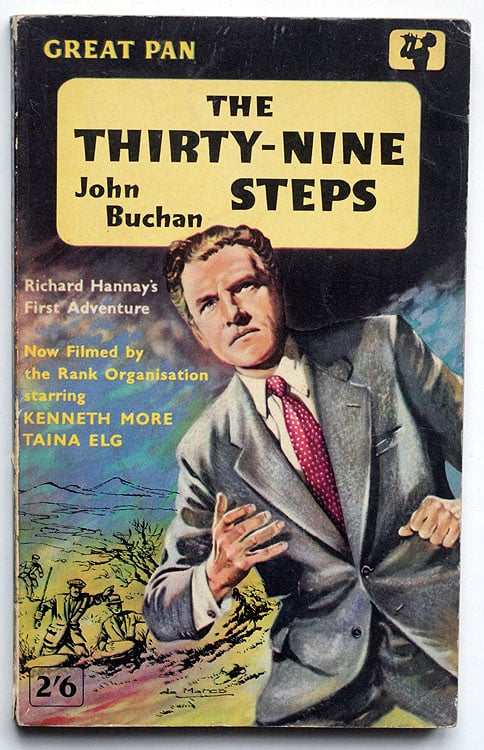
Thanks! To the nearly 400 adventure fans who kickstarted the SAVE THE ADVENTURE e-book club.
JOSH GLENN’S *BEST ADVENTURES* LISTS: BEST 250 ADVENTURES OF THE 20TH CENTURY | 100 BEST OUGHTS ADVENTURES | 100 BEST RADIUM AGE (PROTO-)SCI-FI ADVENTURES | 100 BEST TEENS ADVENTURES | 100 BEST TWENTIES ADVENTURES | 100 BEST THIRTIES ADVENTURES | 75 BEST GOLDEN AGE SCI-FI ADVENTURES | 100 BEST FORTIES ADVENTURES | 100 BEST FIFTIES ADVENTURES | 100 BEST SIXTIES ADVENTURES | 75 BEST NEW WAVE SCI FI ADVENTURES | 100 BEST SEVENTIES ADVENTURES | 100 BEST EIGHTIES ADVENTURES | 75 BEST DIAMOND AGE SCI-FI ADVENTURES | 100 BEST NINETIES ADVENTURES (in progress) | 1994 | 1995 | 1996 | 1997 | 1998 | 1999 | 2000 | 2001 | 2002 | 2003 | NOTES ON 21st-CENTURY ADVENTURES.
20 ADVENTURE THEMES AND MEMES: Index to All Adventure Lists | Introduction to Adventure Themes & Memes Series | Index to Entire Series | The Robinsonade (theme: DIY) | The Robinsonade (theme: Un-Alienated Work) | The Robinsonade (theme: Cozy Catastrophe) | The Argonautica (theme: All for One, One for All) | The Argonautica (theme: Crackerjacks) | The Argonautica (theme: Argonaut Folly) | The Argonautica (theme: Beautiful Losers) | The Treasure Hunt | The Frontier Epic | The Picaresque | The Avenger Drama (theme: Secret Identity) | The Avenger Drama (theme: Self-Liberation) | The Avenger Drama (theme: Reluctant Bad-Ass) | The Atavistic Epic | The Hide-And-Go-Seek Game (theme: Artful Dodger) | The Hide-And-Go-Seek Game (theme: Conspiracy Theory) | The Hide-And-Go-Seek Game (theme: Apophenia) | The Survival Epic | The Ruritanian Fantasy | The Escapade
The invisible prison, in this sort of adventure story, is: NETWORK. The protagonist stumbles upon a network — of criminals, spies, conspirators, terrorists — and becomes enmeshed, trapped. In order to escape, and perhaps even triumph, she must rely on her wits and cunning — like a fox pursued by hounds. The protagonist tends to be an ordinary man or woman. She may have adventurous experience behind her, in the past, from which she has derived an extraordinary capacity for action and cunning… but she is not looking for adventure. Adventure is looking for her.
In the list below, I’ll also include adventure stories in which the hunted protagonist is part of the network of criminals or conspirators — e.g., an assassin. Also guerrillas vs. imperial/official forces.
* Martin Green claims that the “hunted man” adventure’s shape comes into view with William Godwin’s Caleb Williams (1794), where a powerful paranoia about society as a whole is expressed through images of flight and suspicion and double identities.
* Oliver Twist by Charles Dickens, published in 1838.

* Les Misérables is a French historical novel by Victor Hugo, first published in 1862.
* Jules Verne’s 1876 novel Michael Strogoff: The Courier of the Czar, considered one of his best novels. It’s about an empire’s (Russia’s) political troubles, a pursuer who is himself pursued, and a trio of characters: a couple and their adversary. A template for a certain kind of picaresque.
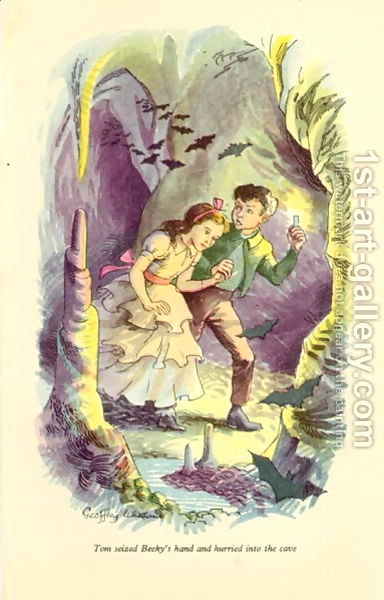
* In Mark Twain’s 1876 novel Tom Sawyer, there is a scary chase scene in a cave. But note Twain is opposed to Sir Walter Scott-type romantic adventures, so this is all sardonic inversion.
* Mark Twain’s 1884/85 novel Adventures of Huckleberry Finn is a hide-and-go-seek story from beginning to end. But note Twain is opposed to Sir Walter Scott-type romantic adventures, so this is all sardonic inversion.
* Jules Verne’s 1885 novel Mathias Sandorf employs many of the devices that had served well in his earlier novels: islands, cryptograms, surprise revelations of identity, technically advanced hardware and a solitary figure bent on revenge. It’s about an empire’s (Austria’s) political troubles, a pursuer who is himself pursued, and a trio of characters: a couple and their adversary.
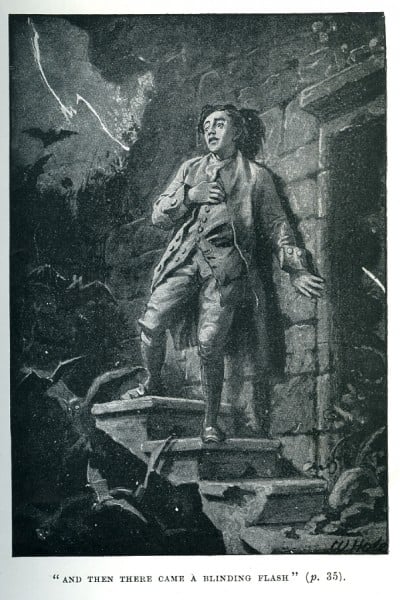
* Kidnapped is a historical fiction adventure novel by Robert Louis Stevenson. First published in the magazine Young Folks from May to July 1886. One of the all-time great hide-and-go-seek adventures.
* Morley Roberts’s 1900 thriller The Fugitives — a fun one.
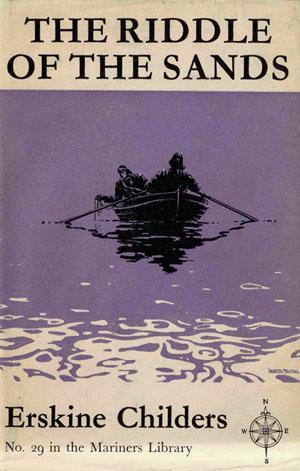
* Robert Erskine Childers’s 1903 thriller The Riddle of the Sands. The reader must be interested in sailing — but if you are, this is one of the all-time great hide-and-go-seek adventures.
* The Scarlet Pimpernel (1905) is a play and adventure novel by Baroness Emmuska Orczy set during the Reign of Terror following the start of the French Revolution.
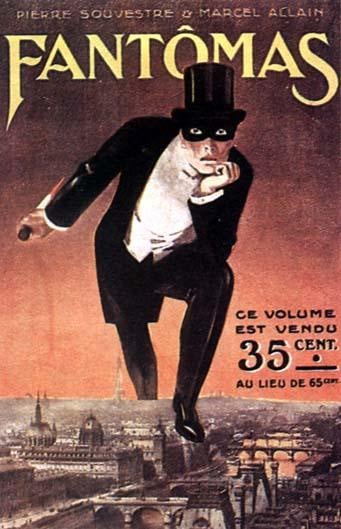
* Marcel Allain and Pierre Souvestre’s Fantomas (1911) — maybe? PS: Highbrow litterateurs liked Fantomas.
* The 1914 British movie The German Spy Peril, which concerns a plot to blow up the Houses of Parliament.
* John Buchan’s Richard Hannay novel The Thirty-Nine Steps (1915). The British espionage novel as we know it really begins with Buchan, who (according to LeRoy L. Panek) bent the materials of the boy’s adventure tale to the service of espionage. This particular book is one of the best hide-and-go-seek adventures of all time.
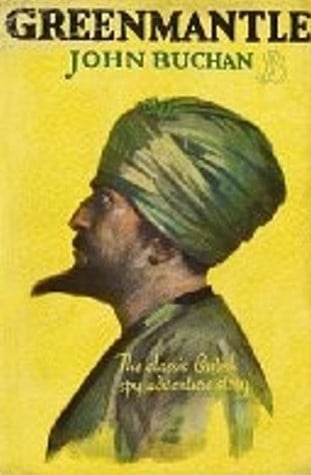
* John Buchan’s Richard Hannay novel Greenmantle (1916).
* Hugh Walpole’s novel The Dark Forest (1916) — I think. Walpole was head of the Anglo-Russian Propaganda Bureau during the Russian Revolution.
* Hugh Walpole’s novel The Secret City (1919) — I think. Walpole was head of the Anglo-Russian Propaganda Bureau during the Russian Revolution.
* Safety Last! is a 1923 romantic comedy silent film starring Harold Lloyd. It includes one of the most famous images from the silent film era: Lloyd clutching the hands of a large clock as he dangles from the outside of a skyscraper above moving traffic.
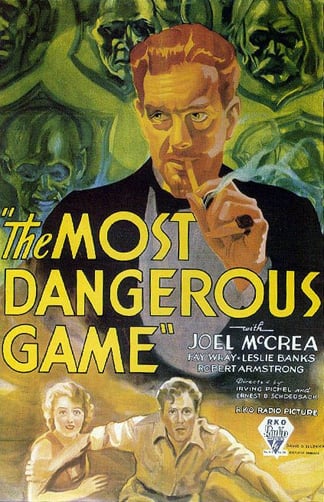
* “The Most Dangerous Game” (also known as “The Hounds of Zaroff”) is the 1924 short story by Richard Connell. One of the greatest and most iconic examples of the theme. The 1932 movie adaptation is also excellent.
* John Buchan’s Richard Hannay novel The Three Hostages (1924).
* H. M. Tomlinson’s 1927 thriller Gallion’s Reach is a somewhat autobiographical tale about a young Englishman who works as a clerk for an importing company and yearns for adventure on the high seas. During a business-related quarrel over labor relations, the protagonist, Jim Colet, accidentally kills his boss. The body of the novel concerns Jim’s escape aboard the ship Altair, describing its adventurous journey from Rangoon, to Malaya, and back to England.
* The Lodger: A Story of the London Fog is a 1927 silent film directed by Alfred Hitchcock. The film, based on a story by Marie Belloc Lowndes, concerns the hunt for a “Jack the Ripper” type of serial killer in London.
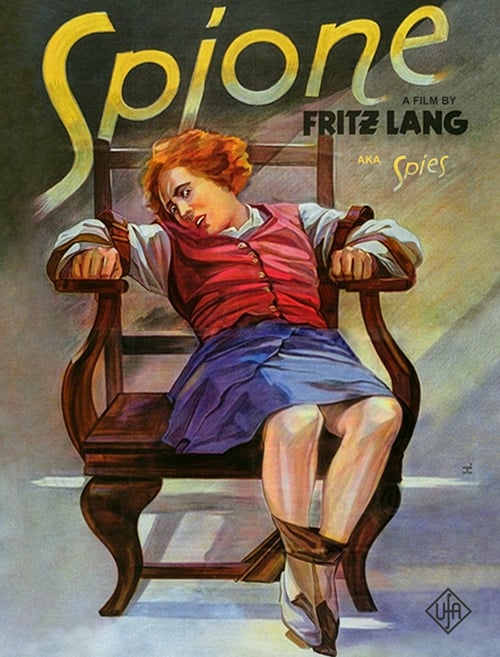
* Spione (English title: Spies, under which title it was released in the United States) is a German silent espionage thriller written and directed by Fritz Lang in 1928. Lang’s wife, Thea von Harbou, was co-writer. It features many tropes that became popular in later spy dramas, including secret headquarters, an agent known by a number, and the beautiful foreign agent who comes to love the hero.
* Ashenden: Or the British Agent is a 1928 collection of loosely linked stories by W. Somerset Maugham. It is partly based on the author’s experience as a member of British Intelligence in Europe during the First World War.
* The Mystery of Tunnel 51 (1928) by Alexander Wilson whose novels conveyed an uncanny portrait of the first head of the Secret Intelligence Service, Mansfield Smith-Cumming, the original “C.”
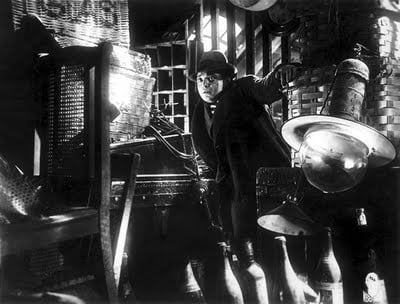
* M is a 1931 German drama-thriller film directed by Fritz Lang and starring Peter Lorre. It was written by Lang and his wife Thea von Harbou.
* Mata Hari is a 1931 American pre-code film loosely based on the life of Mata Hari, an exotic dancer/courtesan executed for espionage during World War I. The film stars Greta Garbo in the title role.
* The Man Who Knew Too Much (1934) is a suspense film directed by Alfred Hitchcock, featuring Peter Lorre.
* British Agent is a 1934 espionage film directed by Michael Curtiz and starring Leslie Howard and Kay Francis. It is based on Memoirs of a British Agent, the 1932 autobiography of R. H. Bruce Lockhart, who had spent a number of years working for the British Secret Service.
* The 39 Steps is a 1935 British thriller film directed by Alfred Hitchcock and starring Robert Donat and Madeleine Carroll. Loosely based on the 1915 adventure novel The Thirty-Nine Steps by John Buchan.
* Sabotage, also released as The Woman Alone, is a 1936 British thriller film directed by Alfred Hitchcock. It is based on Joseph Conrad’s novel The Secret Agent.
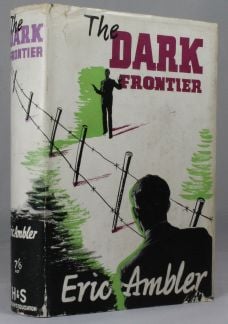
* The Dark Frontier (1936) is Eric Ambler’s first novel.
* John Buchan’s Richard Hannay novel The Island of Sheep (1936).
* The 1936 novel The Wheel Spins by Ethel Lina White. It was adapted into the 1938 Hitchcock thriller The Lady Vanishes.
* Secret Agent (1936) is a British film directed by Alfred Hitchcock, loosely based on two stories in Ashenden: Or the British Agent by W. Somerset Maugham. The film starred John Gielgud, Peter Lorre, Madeleine Carroll, and Robert Young.
* Eric Ambler’s 1937 thriller Uncommon Danger (1937); US title: Background to Danger.
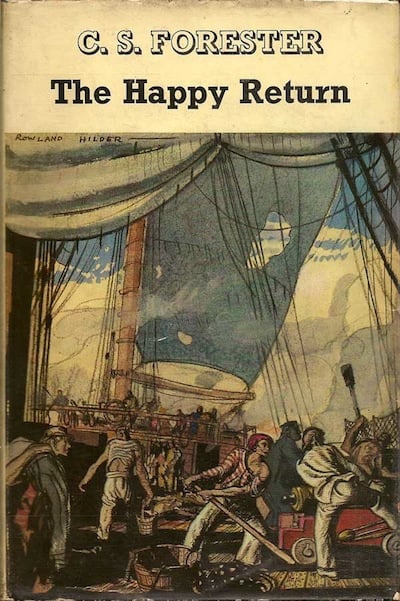
* In C.S. Forester’s first Horatio Hornblower novel, The Happy Return (1937; US: Beat to Quarters) there is a climactic chase between Captain Hornblower’s frigate and the much more powerful warship Natividad.
* Geoffrey Household’s 1937 thriller The Third Hour.
* The Lady Vanishes is a 1938 British comic thriller film directed by Alfred Hitchcock and starring Margaret Lockwood, Michael Redgrave, Paul Lukas and Dame May Whitty. Adapted from the 1936 novel The Wheel Spins by Ethel Lina White.
* Eric Ambler’s 1938 thriller Epitaph for a Spy.
* Eric Ambler’s 1938 thriller Cause for Alarm.
* Eric Ambler’s 1939 thriller The Mask of Dimitrios; US title: A Coffin for Dimitrios.
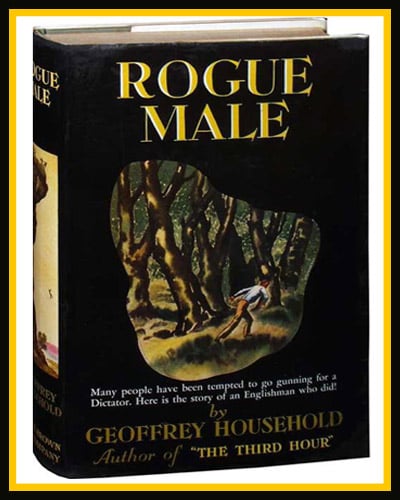
* Geoffrey Household’s Rogue Male (1939) is the most exciting novel of adventure since Buchan’s Thirty Nine Steps.
* Eric Ambler’s 1940 thriller Journey into Fear.
* Hammond Innes’s espionage thriller The Trojan Horse (1940). Excellent chase scene through London’s ancient sewer system.
* Michael Innes’s first thriller: The Secret Vanguard (1940). A sardonic inversion of Buchan’s Thirty-Nine Steps. Heroine on the run in Scotland, secret formula, outrageous transvestite battle.
* Agatha Christie’s 1941 thriller N or M?. PS: Around 1941–1942, MI5 investigated Agatha Christie because a character called Major Bletchley appeared in her N or M?, a story that features a hunt for two of Hitler’s top secret spy agents in Britain. MI5 was afraid that Christie had a spy in Britain’s top-secret codebreaking center, Bletchley Park.
* Man Hunt — 1941 film by Fritz Lang, starring Walter Pidgeon and George Sanders, based on Geoffrey Household’s 1939 novel, Rogue Male. A British hunter vacationing in the Bavarian Alps near the Berghof, Hitler’s home in Berchtesgaden, gets Hitler in his gun sight and ponders whether or not he should shoot him.
* Helen MacInnes’s 1941 espionage thriller Above Suspicion, made into a movie of the same name.

* Lucy Beatrice Malleson, writing as Anthony Gilbert, penned mostly crime novels. But also a few espionage thrillers, including The Vanishing Corpse (1941), which was adapted as the film They Met in the Dark (1943).
* Nevil Shute’s novel Most Secret (1942; censored until 1945), about four British Navy officers who launch a quixotic secret mission against Germany in a converted French fishing vessel, manned by a crew of Free French ex-fishermen, armed only with a flamethrower.
* Pied Piper is a novel by Nevil Shute, first published in 1942. The story concerns an elderly Englishman in France after the Second World War breaks out. Entrusted with the care of two British children, and overtaken by events, he attempts to return to England and safety. His journey is hampered by the unexpected speed of the Nazi invasion of France, and by the fact that he continually finds himself entrusted with the custody of more and more young children.
* Hangmen Also Die! is a 1943 noir war film directed by Fritz Lang and written by John Wexley from a story by Bertolt Brecht and Lang. The film is loosely based on the 1942 assassination of Reinhard Heydrich, the Nazi Reich Protector of German-occupied Prague, number-two man in the SS, and a chief architect of the Holocaust, who was known as “The Hangman of Prague.”
* Graham Greene’s 1943 thriller Ministry of Fear (adapted as a movie by Fritz Lang in 1944). Greene credited Michael Innes — no doubt The Secret Vanguard — as the inspiration for his “entertainment.”
* Objective, Burma!, a 1945 WWII movie — starring Errol Flynn — in which a platoon of special ops are tasked to parachute into the remote Burmese jungle and destroy a strategic Japanese radar station.
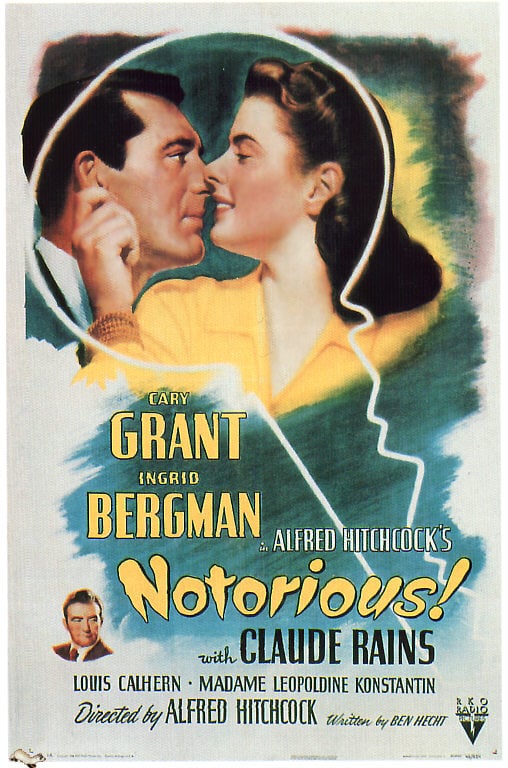
* Notorious is a 1946 American thriller film directed and produced by Alfred Hitchcock, starring Cary Grant, Ingrid Bergman and Claude Rains as three people whose lives become intimately entangled during an espionage operation.
* The Big Clock is a 1946 novel by Kenneth Fearing.
* 13 Rue Madeleine is a 1947 World War II spy film starring James Cagney, Annabella and Richard Conte. The title refers to the Le Havre address where a Gestapo headquarters is located.
* Geoffrey Household’s 1948 thriller Arabesque.
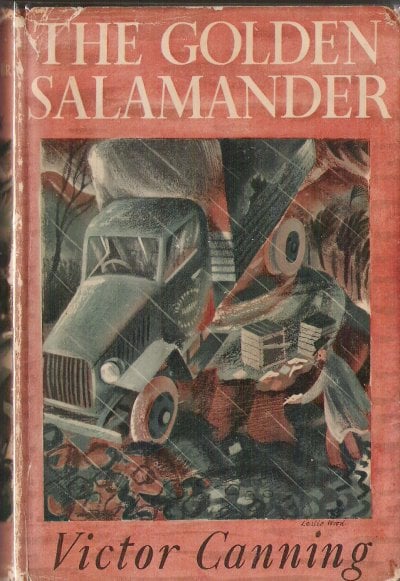
* Victor Canning’s 1949 thriller The Golden Salamander. David Redfern journeys to a tiny African port, where he becomes the centre of the small community’s intrigue. There to catalog and transport an ancient collection of artifacts, he stumbles upon a sinister secret. Culminating in a chase across the cliff tops, David must employ the tactics of his wartime years to survive.
* George Howe’s 1949 novel Call it Treason. Adapted into the 1951 movie Decision Before Dawn.
* Odette is a 1950 film British war film based on the true story of Special Operations Executive French-born agent Odette Sansom, who was captured by the Germans in 1943, condemned to death and sent to Ravensbrück concentration camp to be executed.
* Geoffrey Household’s 1950 thriller The High Place.
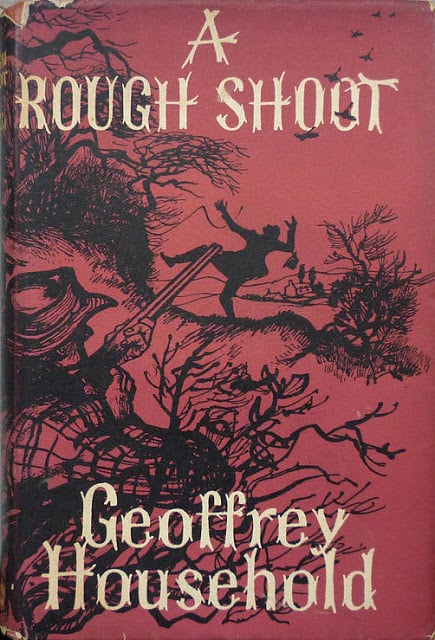
* Geoffrey Household’s 1951 thriller A Rough Shoot, aka Shoot First.
* Geoffrey Household’s 1951 thriller A Time to Kill.
* My Favorite Spy is a 1951 comedy film starring Bob Hope and Hedy Lamarr. Sardonic inversion.
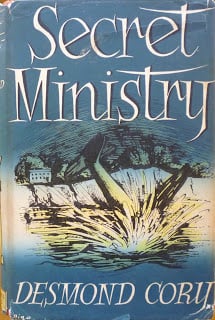
* Johnny Fedora is a British secret agent who was the protagonist of 16 novels, written by Shaun Lloyd McCarthy under the pseudonym of Desmond Cory, published between 1951 and 1984. Fedora was dubbed by literary critics as the “thinking man’s James Bond.” Secret Ministry (1951) is the first Johnny Fedora novel.
* Michael Innes’s Operation Pax (The Paper Thunderbolt), published in 1951. A combination of chase novel, spy thriller, and academic mystery.
* Eric Ambler’s 1952 thriller Judgment on Deltchev.
* Michael Innes’s adventure thriller Christmas at Candleshoe (1953)
* Eric Ambler’s 1953 thriller The Schirmer Inheritance.
* Shasta and Aravis’s flight — on talking horses — in C.S. Lewis’s 1954 YA fantasy novel The Horse and His Boy.
* Geoffrey Household’s 1955 thriller Fellow Passenger aka Hang the Moon High.
* Eric Ambler’s 1956 thriller The Night-Comers, also published as State of Siege.
* In Alistair MacLean’s 1957 thriller The Guns of Navarone, a crackerjack team is assembled in order to sabotage the guns on the island of Navarone. The 1961 film adaptation stars Gregory Peck, David Niven, and Anthony Quinn.
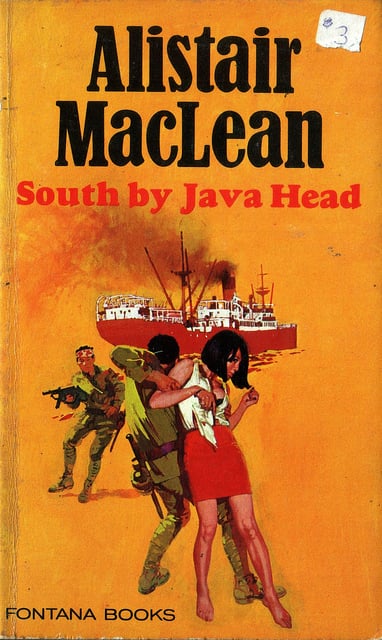
* In Alistair MacLean’s 1957 thriller South by Java Head, as the British stronghold of Singapore falls to the invading Japanese Army, a mixed collection of soldiers, nurses, fleeing civilians, a small boy, and at least one spy attempt to escape the burning city aboard the Kerry Dancer, a battered freighter manned by a disreputable captain and crew.
* Carve Her Name with Pride is a 1958 British drama film based on the book of the same name by R.J. Minney. Set during World War II, the film is based on the true story of the heroism of Special Operations Executive agent Violette Szabo, with Virginia McKenna in the lead role.
* Alexander Klein’s 1958 espionage thriller The Counterfeit Traitor. Adapted into a 1962 movie of the same title.
* Eric Ambler’s 1959 thriller Passage of Arms.
* North by Northwest is a 1959 thriller film directed by Alfred Hitchcock, starring Cary Grant, Eva Marie Saint and James Mason.
* North (French: Nord) is a 1960 novel by Louis-Ferdinand Céline. The story is based on Céline’s escape from France to Denmark after the invasion of Normandy, after he had been associated with the Vichy regime. NB: It is the second published part, although chronologically the first, in a trilogy about these experiences.
* Lionel Davidson’s 1960 thriller The Night of Wenceslas.
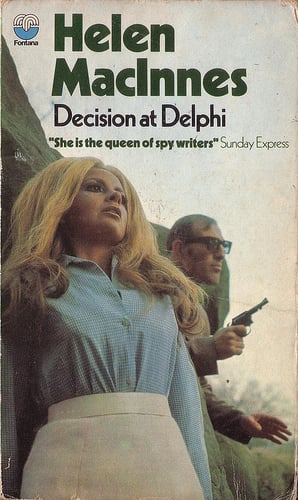
* Helen MacInnes’a 1960 thriller Decision at Delphi — I think?
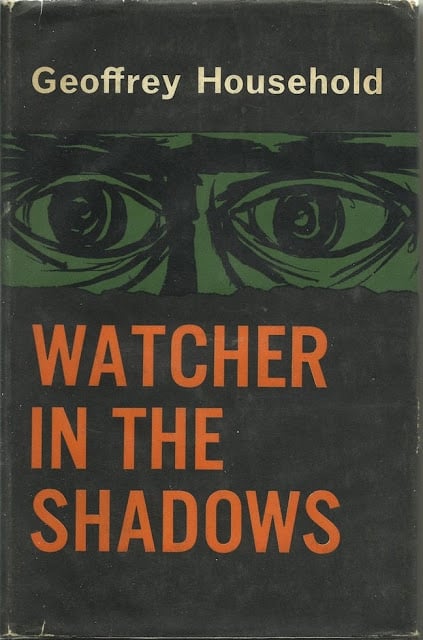
* Geoffrey Household’s 1960 thriller Watcher in the Shadows concerns a man pursued by a ruthless enemy. He must rely on his wits and field-craft.
* Marnie is an English novel by Winston Graham first published in 1961. It is about a young woman who makes a living by embezzling from her employers, moving on, and changing her identity. Adapted by Hitchcock in 1964.
* The first of Harry Harrison’s humorous sci-fi Stainless Steel Rat books was published in 1961: The Stainless Steel Rat. At the beginning of this first novel, the Stainless Steel Rat believes he has pulled off a successful bank job, but is out-conned into working for the government. In the Special Corps, the elite law-enforcement and spy agency led by the former greatest crook in the Galaxy, he joins the ranks of an organization that is composed mostly of ex-criminals like himself. Sardonic inversion of the artful dodger theme.
* Lionel Davidson’s 1962 thriller The Rose of Tibet.
* The Hunter (1962) is a crime thriller novel, written by Donald E. Westlake under the pseudonym Richard Stark. It was the basis for two feature films: John Boorman’s Point Blank (1967), starring Lee Marvin, Brian Helgeland’s Payback (1999), starring Mel Gibson. The book was adapted as a graphic novel by artist Darwyn Cooke in 2009 as Richard Stark’s Parker: The Hunter.
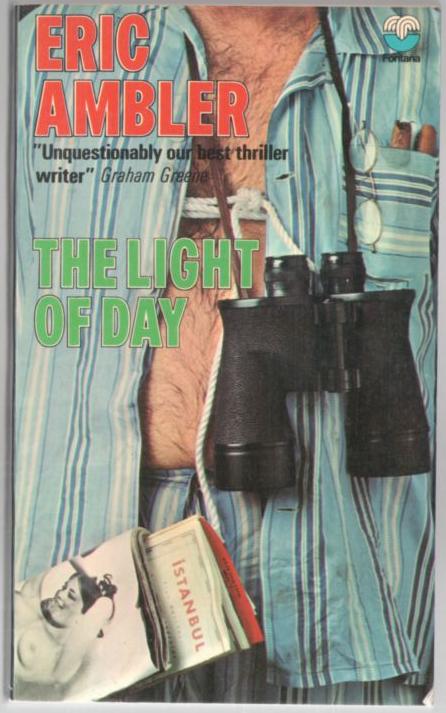
* Eric Ambler’s 1962 thriller The Light of Day, also published as Topkapi.
* The Prize is a 1963 spy film starring Paul Newman, Elke Sommer and Edward G. Robinson.
* Geoffrey Household’s 1963 thriller Thing to Love.
* Eric Ambler’s 1964 thriller A Kind of Anger.
* Not an adventure story, but: The Beatles’ comical adventure movie A Hard Day’s Night (1964). Fans in hot pursuit. Sardonic inversion?
* Hot Enough for June is a 1964 British spy comedy film directed by Ralph Thomas, and featuring Dirk Bogarde and Sylva Koscina. It spoofs the 1960 novel The Night of Wenceslas by Lionel Davidson. A sardonic inversion of this theme.
* That Man From Rio (French: L’Homme de Rio) is a 1964 adventure film directed by Philippe de Broca and starring Jean-Paul Belmondo and Françoise Dorléac. A sardonic inversion of this theme.
* Not an adventure story, but: The Beatles’ comical adventure movie Help! (1965). Sardonic inversion.
* Gavin Lyall’s 1965 thriller Midnight Plus One concerns a couple of crackerjacks — one of them is ex-French Resistance, the other ex-Secret Service — hired to protect a businessman from assassins as he races across Europe.

* Sol Yurick’s 1965 novel The Warriors, adapted into a 1979 movie.
* Is Agatha Christie’s At Bertram’s Hotel an adventure novel? Green suggests it is a kind of hunted man thriller.
* The Berlin Memorandum (1965); republished as The Quiller Memorandum. By “Adam Hall.” Adapted as the 1966 movie The Quiller Memorandum.
* Geoffrey Household’s 1965 thriller Olura.
* Lionel Davidson’s 1966 thriller A Long Way to Shiloh (US title: The Menorah Men).
* The Double Man is a 1967 British spy film which was directed by Franklin Schaffner and based on the novel Legacy of a Spy by writer Henry Maxfield. The film stars Yul Brynner as a CIA agent investigating his son’s fatal “accident”.
* Eric Ambler’s 1967 thriller Dirty Story.
* Geoffrey Household’s 1967 thriller The Courtesy of Death.

* Desmond Bagley’s thriller Landslide (1967) — I think
* Geoffrey Household’s 1968 thriller Dance of the Dwarfs.
* Lionel Davidson’s 1968 thriller Making Good Again.
* Where Eagles Dare is a 1968 WWII action film starring Richard Burton and Clint Eastwood. Alistair MacLean wrote the novel and the screenplay at the same time. A team of commandos parachutes into a German-held fortress in Alps.
* Bullitt is a 1968 American dramatic thriller film directed by Peter Yates and produced by Philip D’Antoni. It stars Steve McQueen, Robert Vaughn and Jacqueline Bisset. The screenplay by Alan R. Trustman and Harry Kleiner was based on the 1963 novel Mute Witness by Robert L. Pike.
* Alistair MacLean’s Guns of Navarone sequel, Force 10 from Navarone, was published in 1968. The movie — with Harrison Ford — came out in 1978.
* Eric Ambler’s 1969 thriller The Intercom Conspiracy, also published as The Quiet Conspiracy.
* Desmond Bagley’s Running Blind (1970) — I think.
* The second of Harry Harrison’s humorous sci-fi Stainless Steel Rat books was published in 1970: The Stainless Steel Rat’s Revenge. Sardonic inversion of this theme.
* Fantastic Mr Fox is a children’s novel written by Roald Dahl. It was published in 1970.
* Lionel Davidson’s 1971 thriller Smith’s Gazelle.
* Geoffrey Household’s 1971 thriller Doom’s Caravan.
* The third of Harry Harrison’s humorous sci-fi Stainless Steel Rat books was published in 1972: The Stainless Steel Rat Saves the World. Sardonic inversion of this theme.
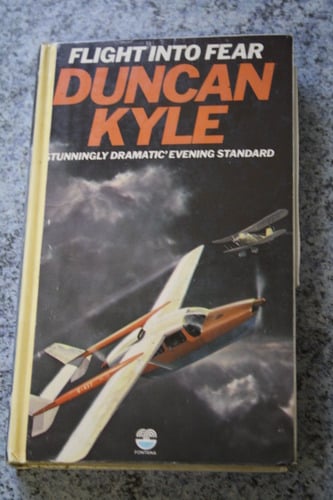
* Duncan Kyle’s 1972 thriller Flight Into Fear. A freelance pilot and his mysterious passenger evade their pursuers through the San Francisco bay. Eventually, they reach the plane and head to England. Along the way, the aeroplane is hijacked and has numerous malfunctions. Upon arriving in England, there is another cat-and-mouse chase.
* Geoffrey Household’s 1972 thriller The Three Sentinels.
* The Odessa File is a thriller by Frederick Forsyth, first published in 1972, about the adventures of a young German reporter attempting to discover the location of a former SS concentration-camp commander.
* Francis Clifford’s 1973 thriller Amigo, Amigo is – I think — about hunting escaped Nazis?
* Scorpio is a 1973 spy film directed by Michael Winner. It stars Burt Lancaster, Alain Delon and Paul Scofield.
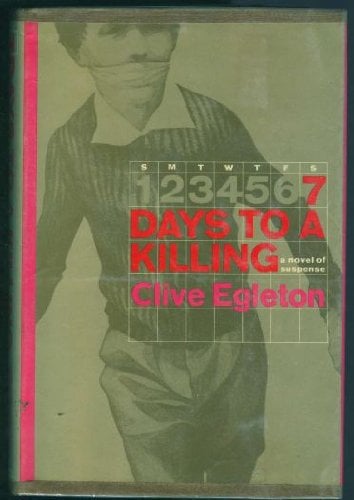
* Seven Days to a Killing is a British spy novel by Clive Egleton, published in 1973. It was adapted to film as The Black Windmill in 1974.
* Geoffrey Household’s 1973 thriller The Lives and Times of Bernardo Brown.
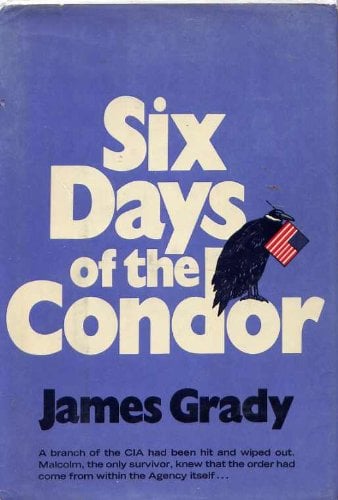
* James Grady’s 1974 thriller Six Days of the Condor — upon which the 1975 Robert Redford movie Three Days of the Condor is based — sees a nerdy CIA analyst (he specializes in reading thrillers and mysteries) use his knowledge to survive the attacks of trained assassins and rogue CIA agents. And hide out.
* Ivor Drummond’s 1974 “super-thriller of terror and suspense” The Power of the Bug, featuring a crackerjack team of wealthy adventurers: Colly Tucker (Coleridge Tucker II), Lady Jennifer Norrington, and Sandro the enormous Italian (il conte Alessandro di Ganzarello).
* Duncan Kyle’s 1974 thriller Terror’s Cradle. In Shetland, hunted by helicopter and powerboat, a journalist pits his wits against both CIA and KGB as he barters desperately for his girlfriend’s life.
* Eric Ambler’s 1974 thriller Doctor Frigo.
* Clive Egleton’s 1974 novel The October Plot.
* The Black Windmill is a 1974 British spy thriller directed by Don Siegel and starring Michael Caine, John Vernon, Janet Suzman and Donald Pleasence.
* The Terrorists (Swedish title: Terroristerna) is a 1975 novel by Sjöwall and Wahlöö in their detective series revolving around Martin Beck and his team. The Terrorists was unfinished at the time of Per Wahlöö’s death in June 1975; the manuscript was completed by Maj Sjöwall alone.
* Clive Egleton’s 1975 novel Skirmish.
* Geoffrey Household’s 1975 thriller Red Anger.
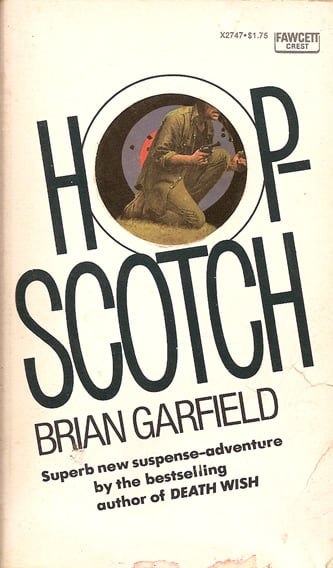
* Brian Garfield’s 1975 novel Hopscotch, which was adapted into the 1980 Walter Matthau movie of the same title. A sardonic inversion?
* Gerald Seymour’s 1975 novel Harry’s Game. A British cabinet minister is gunned down by an IRA assassin, leaving an undercover agent to track down the killer.
* Three Days of the Condor is a 1975 American political thriller film directed by Sydney Pollack and starring Robert Redford, Faye Dunaway, Cliff Robertson, and Max von Sydow. The screenplay was adapted from the 1974 novel Six Days of the Condor by James Grady.
* Lionel Davidson’s 1976 thriller The Sun Chemist.
* Assault on Precinct 13 is a 1976 American action thriller film written, directed, scored and edited by John Carpenter.
* Clive Egleton’s 1976 novel State Visit.
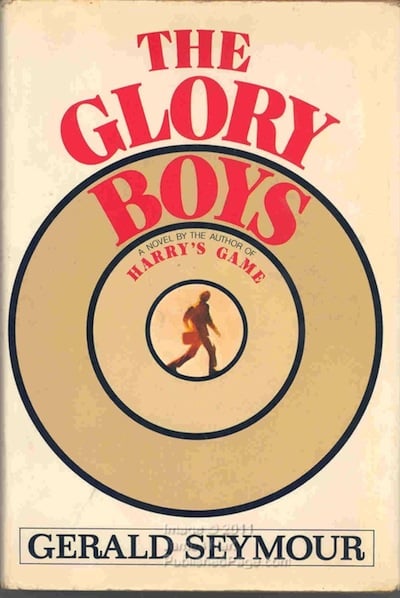
* Gerald Seymour’s 1976 novel The Glory Boys. An Arab terrorist, the only survivor of a three-man hit squad ambushed by Israeli Intelligence in France, plans to murder Israel’s leading nuclear scientist on a visit to London. McCoy, an IRA mercenary, is to provide him with the weapons. Jimmy, who works for British Intelligence, must find them. (It was made into a TV mini-series in 1984 — starring Rod Steiger, Anthony Perkins, Alfred Burke and Joanna Lumley.)
* Eric Ambler’s 1977 thriller Send No More Roses; US title: The Siege of the Villa Lipp.
* Stephen King’s 1977 novel The Shining.
* Geoffrey Household’s 1977 thriller Hostage London: The Diary of Julian Despard.
* Star War IV: A New Hope (1977). Guerrillas vs. empire.
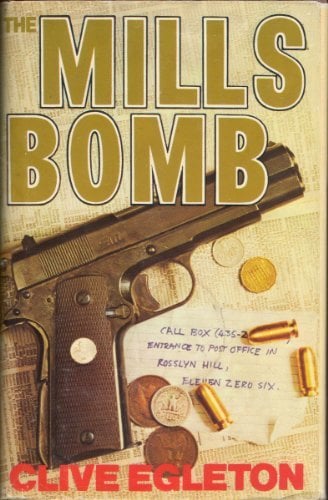
* Clive Egleton’s 1978 novel The Mills Bomb.
* Geoffrey Household’s 1978 thriller The Last Two Weeks of Georges Rivac.
* Clive Egleton’s 1979 novel Backfire.
* The 1979 American cult action/thriller film The Warriors. A hide-and-go-seek classic.
* Stanley Kubrick’s 1980 adaptation of Stephen King’s 1977 novel The Shining.
* Star Wars V: The Empire Strikes Back (1980). Guerrillas vs. empire.
* Robert Ludlum’s 1980 spy novel The Bourne Identity.
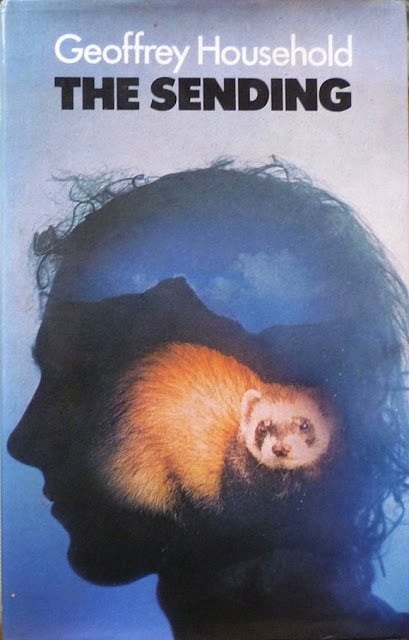
* Geoffrey Household’s 1980 thriller — with a supernatural twist — The Sending.
* Eye of the Needle is a 1981 film directed by Richard Marquand, based on the novel of the same title by Ken Follett, and starring Donald Sutherland.
* The Feral Kid in Mad Max II: The Road Warrior is an artful dodger.
* Eric Ambler’s 1981 thriller The Care of Time.
* V for Vendetta is a 1982 graphic novel written by Alan Moore and illustrated mostly by David Lloyd, set in a dystopian future United Kingdom imagined from the 1980s to about the 1990s. A mysterious masked revolutionary who calls himself “V” works to destroy the totalitarian government. Adapted into a 2005 movie.
* Star Wars VI: Return of the Jedi (1983). Guerrillas vs. empire. And the hide-and-go-seek game played by Darth Vader and Luke Skywalker at the end, too.
* Empire of the Sun is a 1984 novel by J. G. Ballard. Essentially fiction but draws extensively on Ballard’s experiences in World War II. A young British boy must survive by his wits in occupied Shanghai.
* John Macgregor’s 1986 novel Propinquity describes an attempt by a modern couple to revive the frozen body of a gnostic medieval Queen, buried deep under Westminster Abbey. Their attempt to expose the feminine aspect of Christianity’s origins results in fierce Church opposition and, eventually, an international manhunt.
* The 1987 sci-fi/horror movie Predator, starring Arnold Schwarzenegger, Carl Weathers, Jesse Ventura, and Kevin Peter Hall.
* The 1990 family comedy Home Alone, written and produced by John Hughes and directed by Chris Columbus, is a sardonic inversion. One quickly begins to root for the burglars, not the kid.
* In the 2000 YA fantasy novel Harry Potter and the Goblet of Fire, Harry hides behind a tombstone. Voldemort tells him, “We are not playing hide and seek, Harry. You cannot hide from me. Does this mean you are tired of our duel? Does this mean that you would prefer me to finish it now, Harry? Come out, Harry… Come out and play, then…”
* In Harry Potter and the Order of the Phoenix (2003), Dumbledore’s Army is a student organization founded by Harry Potter, Ron Weasley and Hermione Granger, in order to stand up against the regime of Hogwarts High Inquisitor Dolores Umbridge, as well as to learn practical Defence Against the Dark Arts.
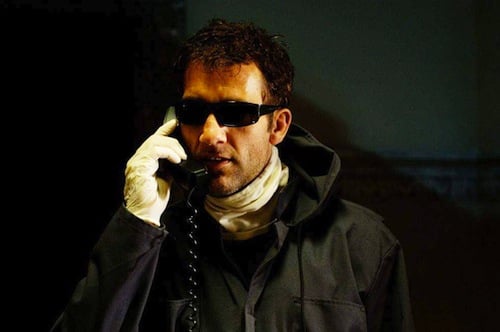
* Spike Lee’s Inside Man (2006).
* No Country for Old Men is a 2007 American thriller movie written and directed by Joel and Ethan Coen, based on the Cormac McCarthy novel of the same name.
* The Adjustment Bureau is a 2011 American romantic action thriller film loosely based on the Philip K. Dick short story, “Adjustment Team.”
* Wes Anderson’s 2012 movie Moonrise Kingdom is an ironic homage to the Artful Dodger theme.
20 ADVENTURE THEMES AND MEMES: Index to All Adventure Lists | Introduction to Adventure Themes & Memes Series | Index to Entire Series | The Robinsonade (theme: DIY) | The Robinsonade (theme: Un-Alienated Work) | The Robinsonade (theme: Cozy Catastrophe) | The Argonautica (theme: All for One, One for All) | The Argonautica (theme: Crackerjacks) | The Argonautica (theme: Argonaut Folly) | The Argonautica (theme: Beautiful Losers) | The Treasure Hunt | The Frontier Epic | The Picaresque | The Avenger Drama (theme: Secret Identity) | The Avenger Drama (theme: Self-Liberation) | The Avenger Drama (theme: Reluctant Bad-Ass) | The Atavistic Epic | The Hide-And-Go-Seek Game (theme: Artful Dodger) | The Hide-And-Go-Seek Game (theme: Conspiracy Theory) | The Hide-And-Go-Seek Game (theme: Apophenia) | The Survival Epic | The Ruritanian Fantasy | The Escapade
MORE FURSHLUGGINER THEORIES BY JOSH GLENN: TAKING THE MICKEY (series) | KLAATU YOU (series intro) | We Are Iron Man! | And We Lived Beneath the Waves | Is It A Chamber Pot? | I’d Like to Force the World to Sing | The Argonaut Folly | The Perfect Flâneur | The Twentieth Day of January | The Dark Side of Scrabble | The YHWH Virus | Boston (Stalker) Rock | The Sweetest Hangover | The Vibe of Dr. Strange | CONVOY YOUR ENTHUSIASM (series intro) | Tyger! Tyger! | Star Wars Semiotics | The Original Stooge | Fake Authenticity | Camp, Kitsch & Cheese | Stallone vs. Eros | The UNCLE Hypothesis | Icon Game | Meet the Semionauts | The Abductive Method | Semionauts at Work | Origin of the Pogo | The Black Iron Prison | Blue Krishma! | Big Mal Lives! | Schmoozitsu | You Down with VCP? | Calvin Peeing Meme | Daniel Clowes: Against Groovy | The Zine Revolution (series) | Best Adventure Novels (series) | Debating in a Vacuum (notes on the Kirk-Spock-McCoy triad) | Pluperfect PDA (series) | Double Exposure (series) | Fitting Shoes (series) | Cthulhuwatch (series) | Shocking Blocking (series) | Quatschwatch (series) | Save the Adventure (series)
READ MORE essays by Joshua Glenn, originally published in: THE BAFFLER | BOSTON GLOBE IDEAS | BRAINIAC | CABINET | FEED | HERMENAUT | HILOBROW | HILOBROW: GENERATIONS | HILOBROW: RADIUM AGE SCIENCE FICTION | HILOBROW: SHOCKING BLOCKING | THE IDLER | IO9 | N+1 | NEW YORK TIMES BOOK REVIEW | SEMIONAUT | SLATE
